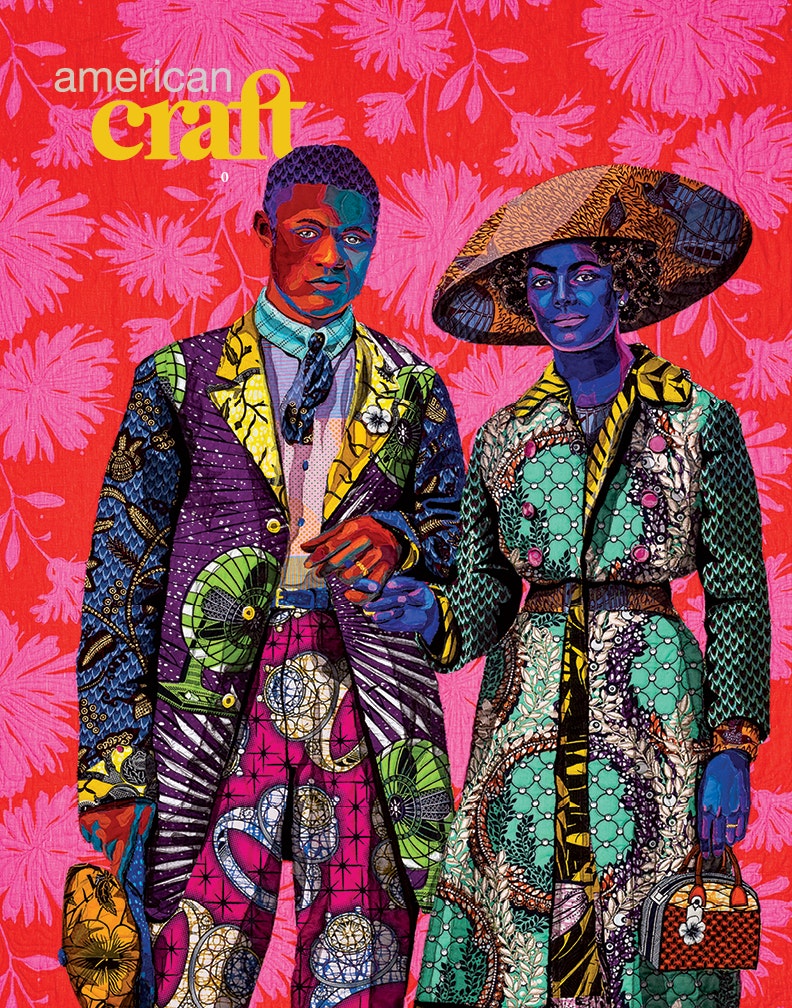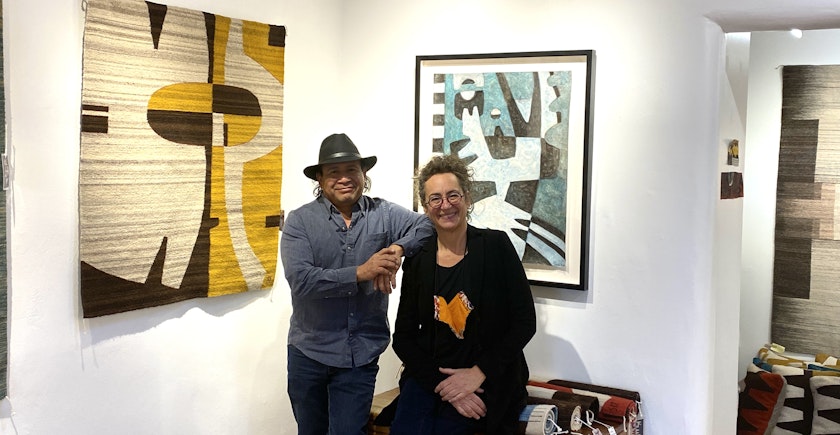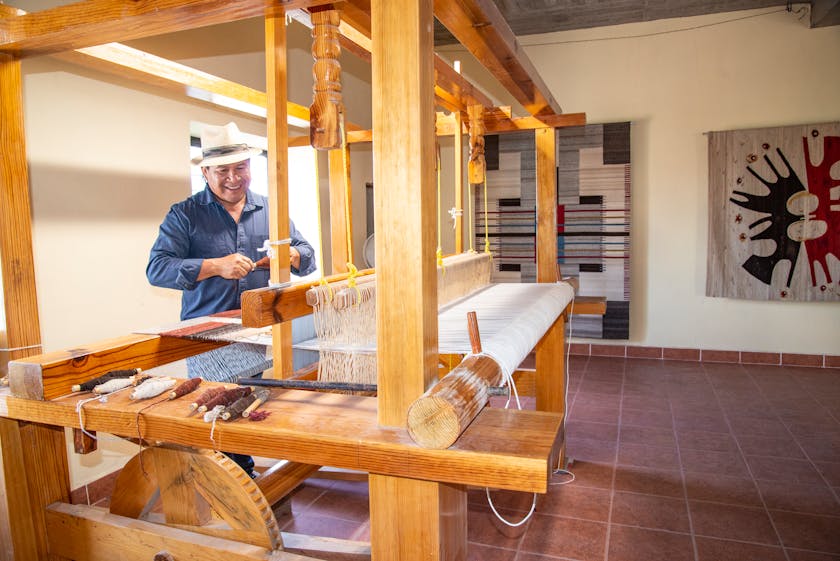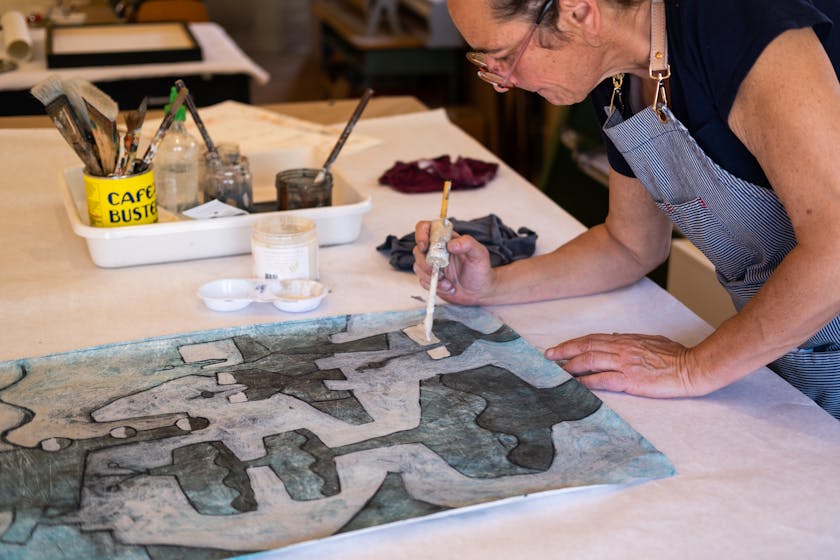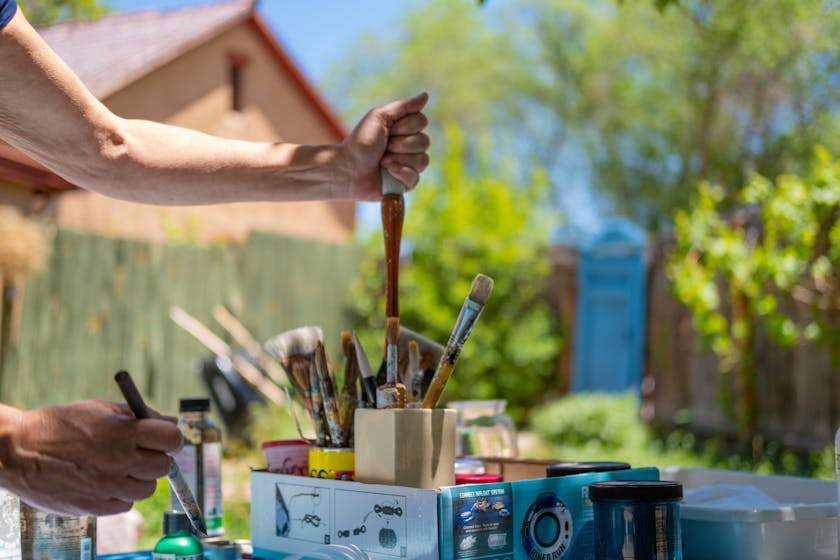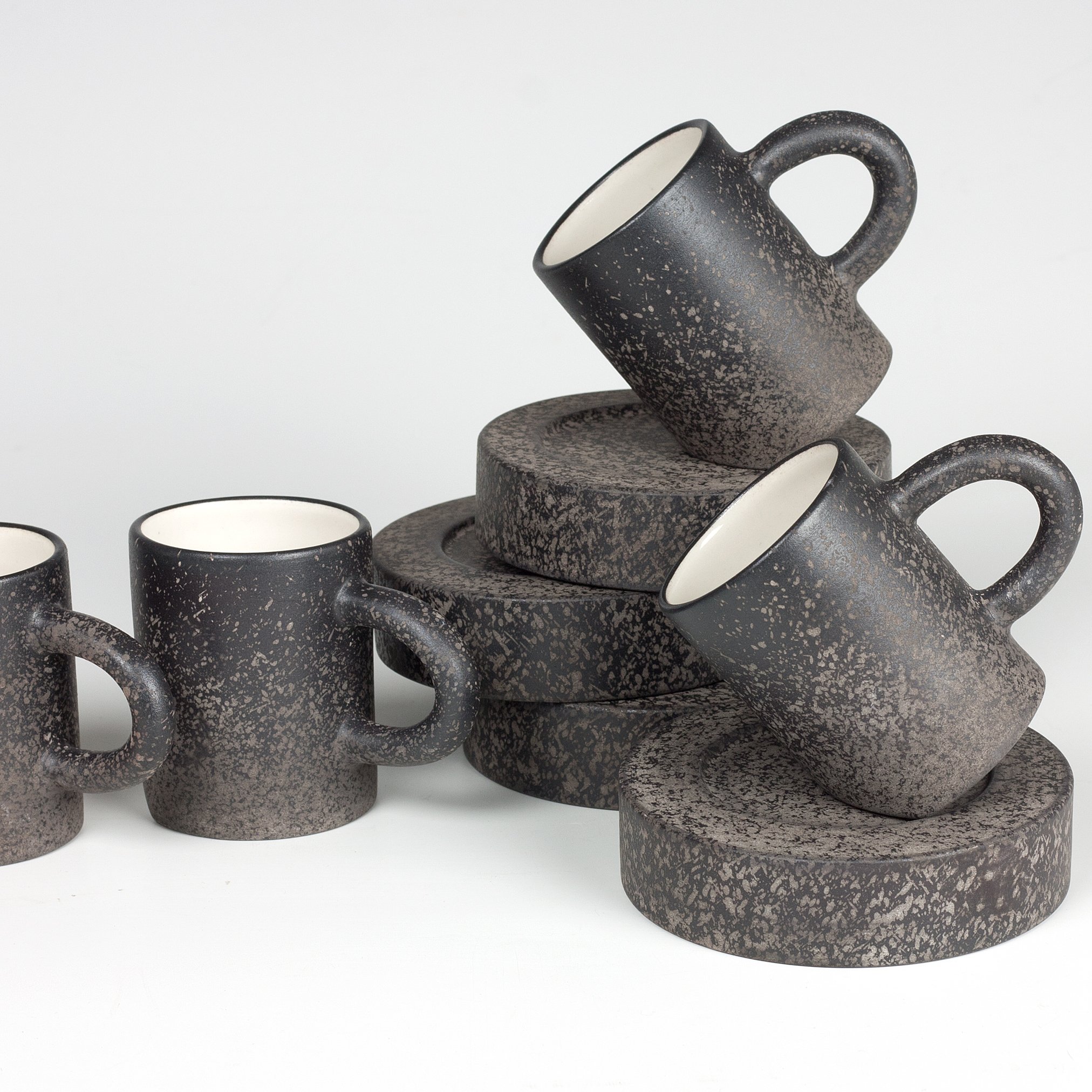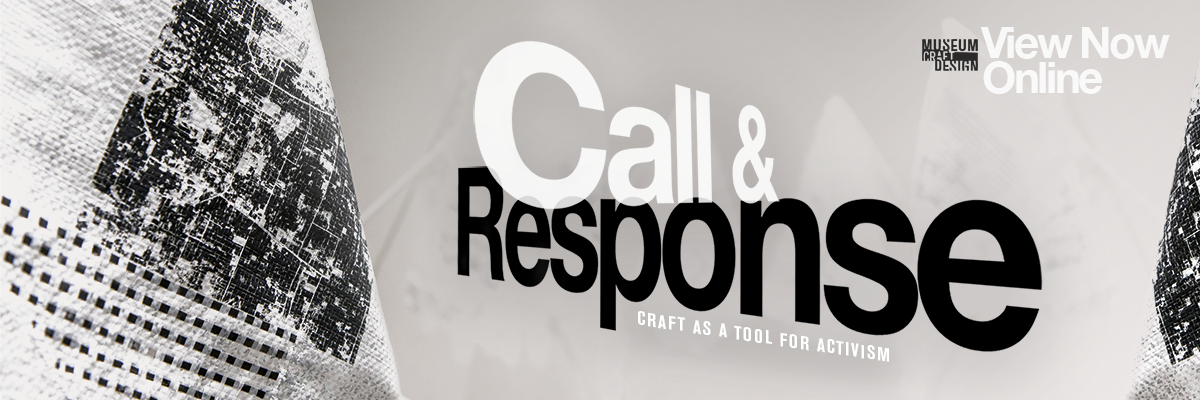The Queue: Sandra & Wence Martinez
Get to know the people featured in the pages of our magazine as they share what's inspiring them right now.
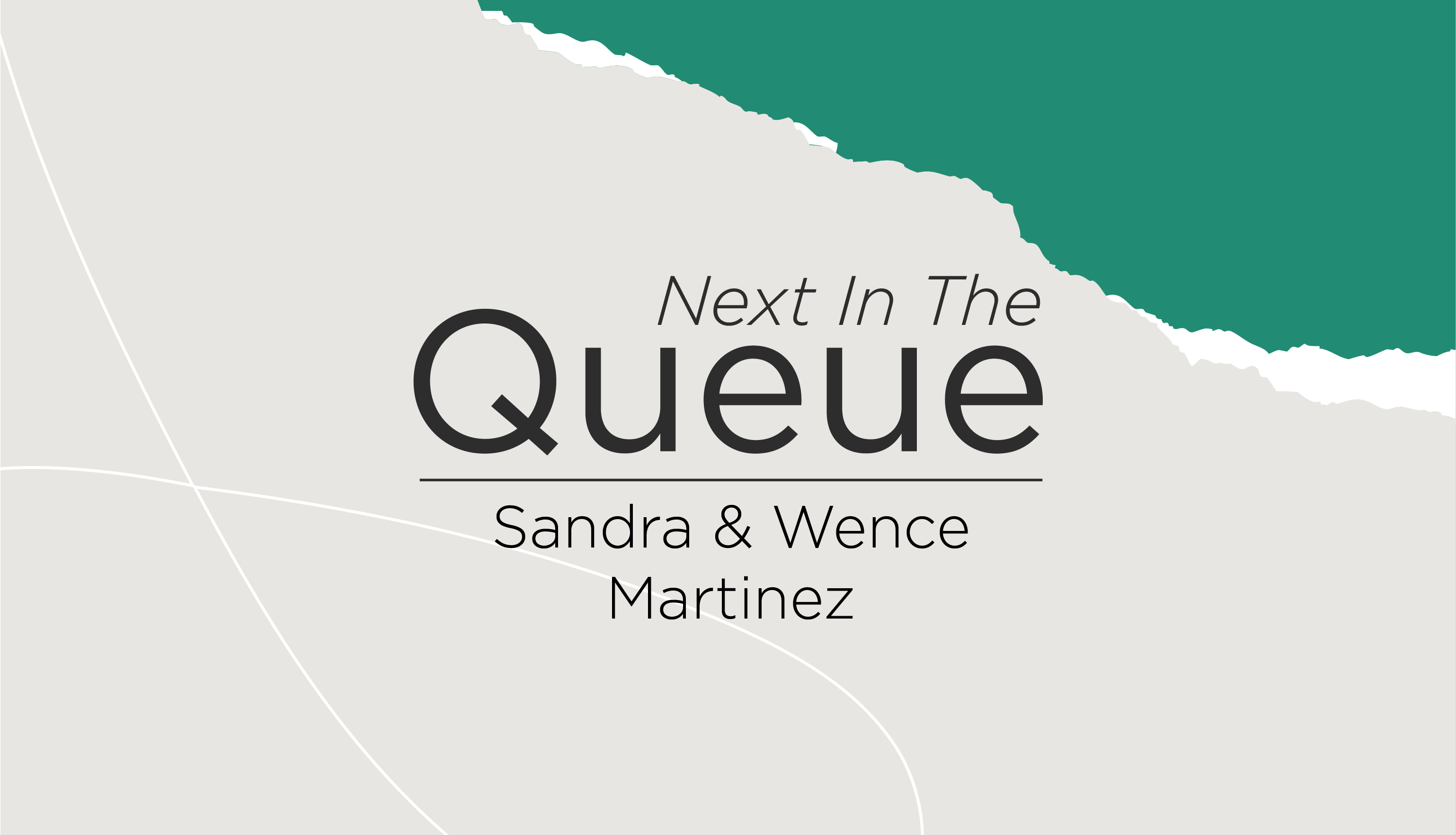
Welcome to the Kinship series of The Queue
A biweekly roundup for and by the craft community, The Queue introduces you to the artists, curators, organizers, and more featured in the current issue of American Craft. We invite these inspiring individuals to share personally about their lives and work as well as what's inspiring them right now.
Two creative spirits thriving together
Featured in our Fall 2021 issue in the feature story "Kindred," Sandra and Wence Martinez have been working together for decades in a true artistic partnership. Sandra is a symbolist painter. Wence is a weaver with ancestral roots in Oaxaca, Mexico. He weaves the patterns in her paintings. Together they make up Martinez Studio, located in Door County, Wisconsin, and their new second location on Canyon Road in Santa Fe. @martinezstudionorth @martinezstudiosouth
Wence: I’m a weaver from Teotitlan del Valle, Oaxaca, Mexico. Family training combined with extensive gobelins and technical dyeing studies in Mexico City inform my work. In our Teotitlan and Wisconsin studios, I dye hand-spun Oaxacan Churro wool and weave my own pattern-driven designs as well as symbolist works designed by my collaborator of over three decades, Sandra Martinez. We represent ourselves in our Door County, Wisconsin gallery and now on Canyon Road in Santa Fe. Building cultural bridges by direct contact with our audience has been an important part of our work since we opened Martinez Studio to the public in 1994.
Sandra: For over three decades I’ve collaborated with master weaver Wence Martinez to create hand spun wool weavings based on my paintings. I use automatic drawing to generate my designs and as a tool for living. My origins are actually in clay, which remains a solace in my life. Throw a hundred bowls, and we can just begin a conversation about throwing a bowl. We can tease out all that illusive inside-and-outside business: The Vessel. I’m very interested in the line that contains the shapes in my drawings. That skeletal structure, masses contained by lines, is what Wence takes off into, adding his own mojo. So it’s still about the container, the vessel...of experience for each of us individually, the two of us combined and then again in the eyes of the viewer.
Wence: It's been challenging to say the least. I’ve been doing lots of walking on Mount Picacho in Teotitlan, and weaving itself is very Zen. When I’m deeply involved at the loom, I feel grounded and connected to my family as I pass on my experience to them in the village.
Sandra: Drawing plays a crucial role in the way I process. I recently completed a series of pandemic-related works over Gustave Dore’s illustrations of Dante’s Inferno. I spend a lot of time marinating on certain substrates before I use them, like the Dante illustrations or the packs of rifle targets in my studio now. Having such a long term collaborator really helps, too. We have weathered so many storms together, we know how to remind each other of the good things, and we shoulder the challenges like a good team of oxen.
Wence: My art connects me to my parents and grandparents who taught me to weave in the village. It also brings me closer to my daughter as I pass my skills down to her. When I buy my wool, I feel a strong kinship with the spinners as I visit their homes where my family has been buying from them for generations.
Sandra: I feel a sense of kinship with all humans when I make art. The urge to decorate—to create marks and objects where before there was nothing—is something all humans have felt called to do. I celebrate all making...all levels and endeavors. It’s inherently healthy, mysterious, and fulfilling.

Photo by Wence Martinez.

Photo courtesy of the artists.
Wence: Before meeting Sandra in 1988, I made some weavings for famous painters. Usually contracted through a third party, I was not given credit for the work. I wonder when I will stumble on one of them in a museum somewhere. Collaborating with Sandra, we have always credited the designer, weaver, and assistants. Together we broke those barriers.
Sandra: In 1994, we realized that in order to build an audience for our work in Wisconsin, we would need to open our own studio to the public. That involved strengthening a whole new set of muscles. We’ve thoroughly enjoyed meeting visitors where they are, sharing our stories, and building cultural bridges. I am so happy to see more and more artists take matters into their own hands. For us, deciding to rep ourselves has been an empowering, challenging and amazing experience. It’s very potent to talk about your work directly, eye to eye with the audience day in, day out. People respond so beautifully when they get a chance to speak vulnerably about whatever questions the work has triggered in them. It is an honor to unpack the cultural richness that Wence and his weaving represents.
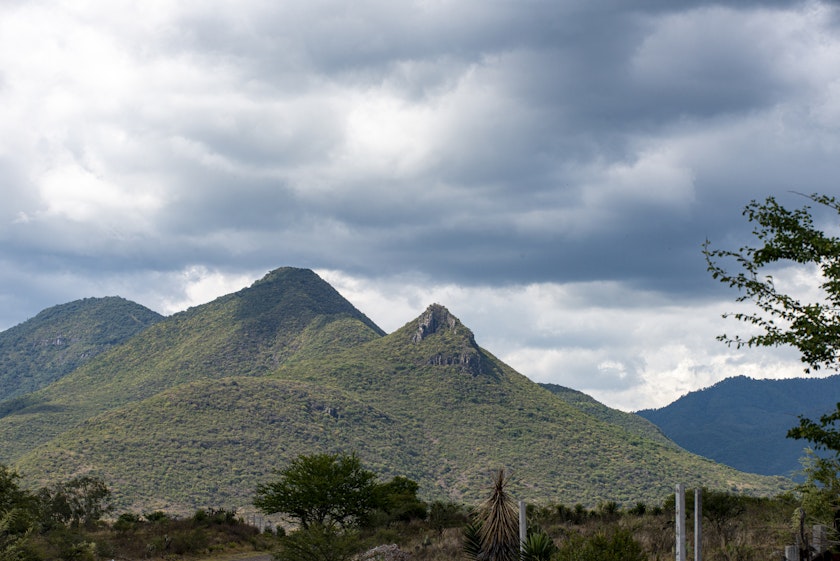
Mount Picacho in Teotitlan del Valle, Oaxaca, Mexico. Photo by Wence Martinez.
Wence: Natural dyes, many of which are local to Oaxaca. I have special spots that my father showed me on Mount Picacho, the sacred mountain in Teotitlan. The process serves a duel purpose because I get to wander and reflect as I collect my dye materials.
Sandra:The ability to always be able to create something without needing a specific tool. I’m always looking for simpler, more accessible ways to make work. Goal has always been stay focused on the root of the experience and remove barriers to that...value that above all other markers or resulting objects.
...and really nice sumi brushes. They hold my watered down acrylic, medium rich, dirt laden mix so well. I have learned to lovingly wash them with shampoo and use conditioner! I feel like I'm working with slip and clay again pushing dirt around with sumi brushes...like 40 years ago in the clay shop.
Wence: Right now I’m reading The Four Agreements by Don Miguel Ruiz. The book talks about being impeccable with your word, not taking anything personally, not making assumptions, and doing your best.
Sandra: If I could enjoy every bit of food and drink from a Romulus Craft porcelain piece, I would be in heaven. Holding their work in my hands, I feel such an intense respect for them, the clay, and the years that added up to the day those hands fashioned that vessel.
Inspired by the people featured in The Queue?
Dive deeper into their work in the pages of American Craft magazine. Become a member of the American Craft Council to get a subscription and help fund a range of nonprofit programs that elevate the craft community.

